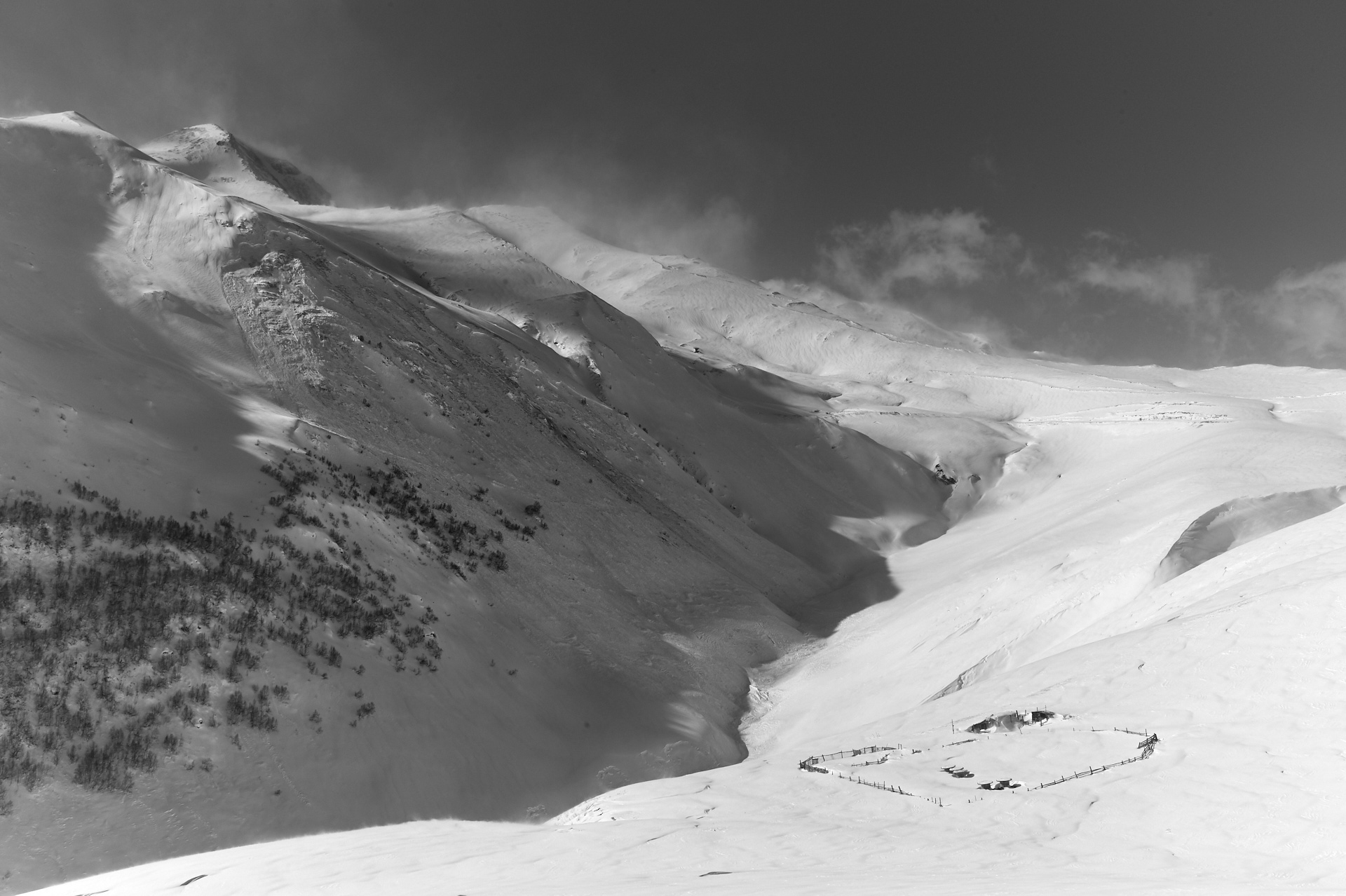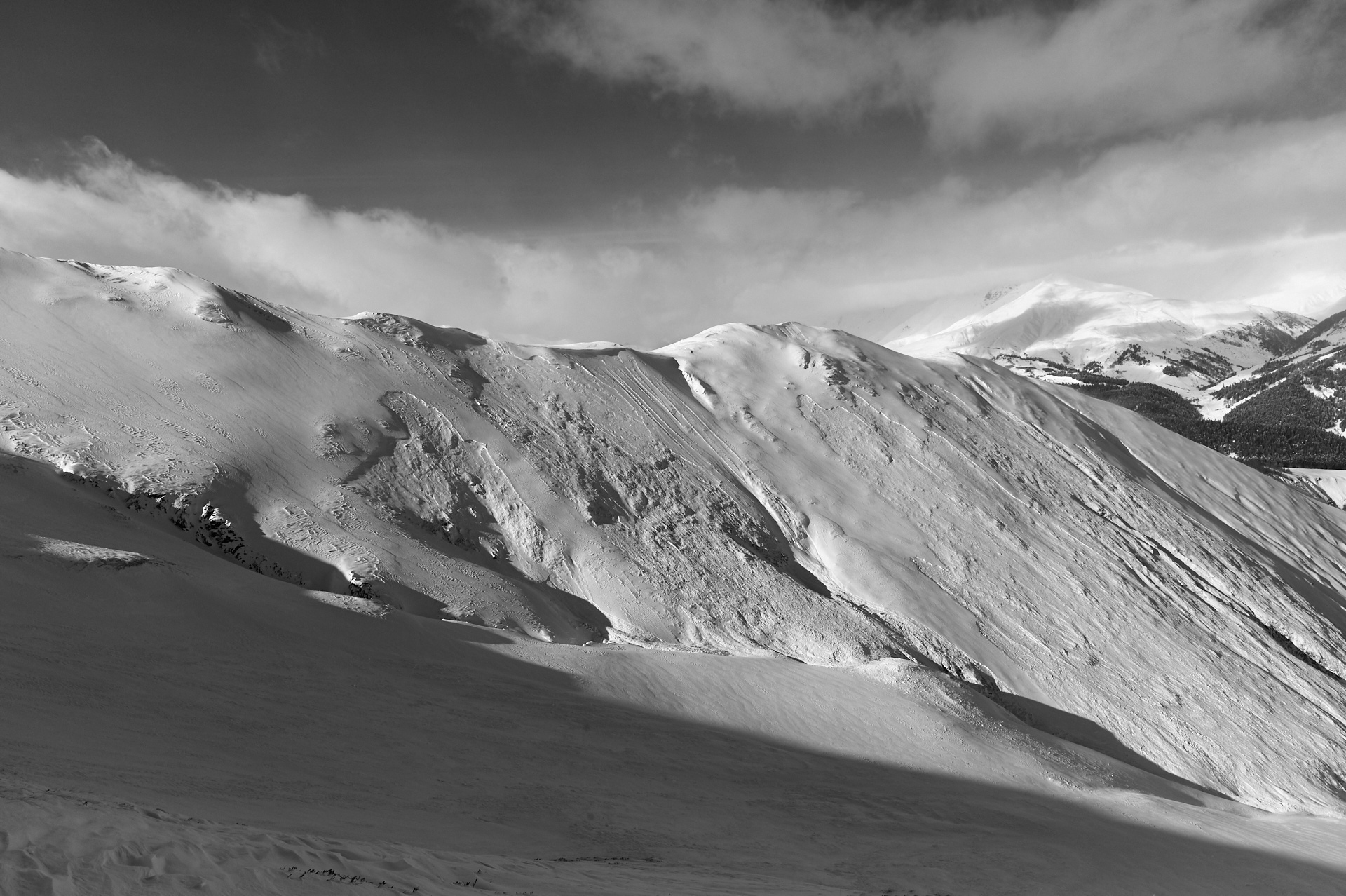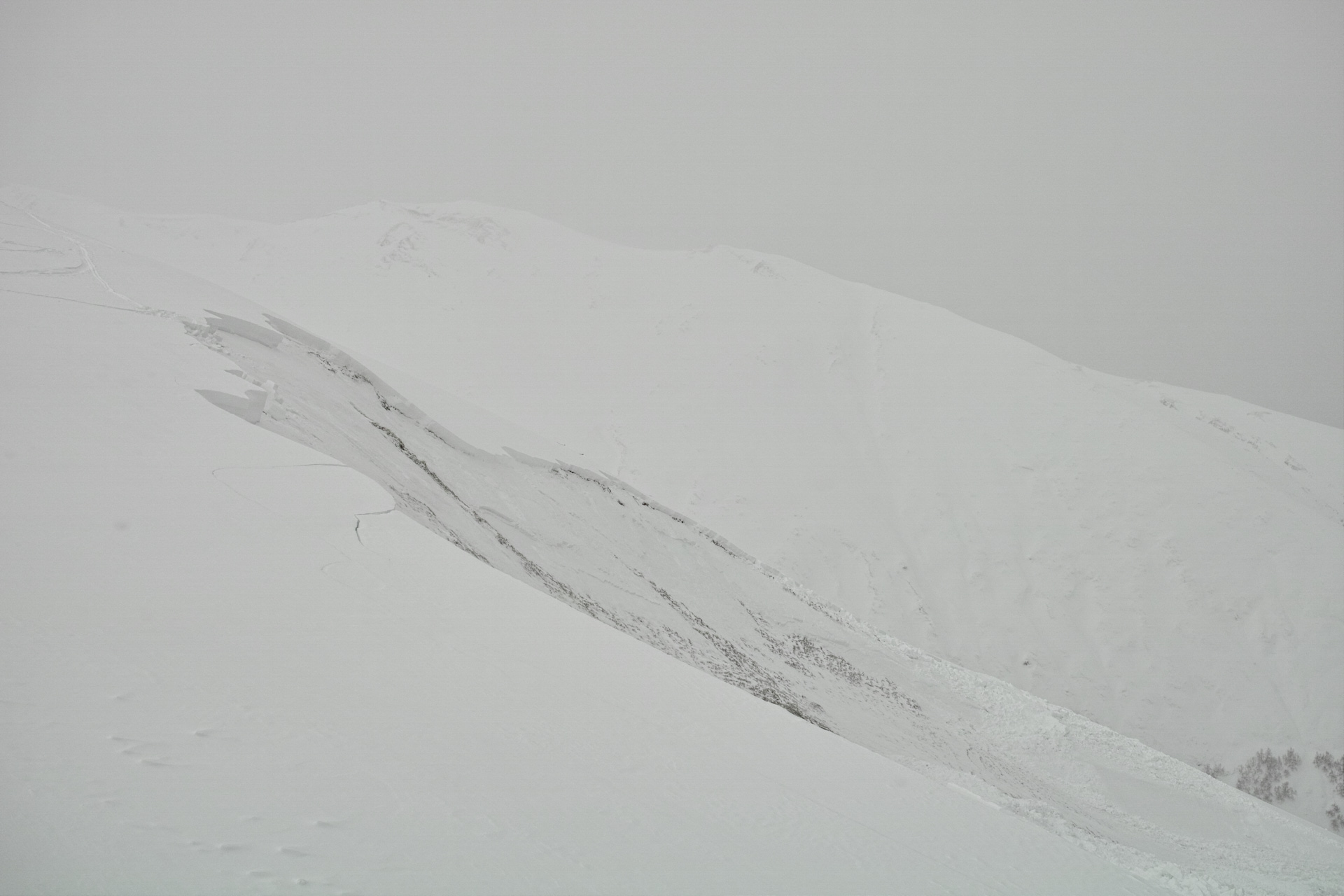Persistent weak layer and wind slabs, and a difficult season in the Caucasus
Arkhyz, Northern Caucasus
I just spent 9 days with the Russian Mountain Guide Association training program, based in Arkhyz, Northern Caucasus. The course started on 1 February and finished on 9 February.
It has been an usually dry winter. When we arrived we found a thin (approx. 60-120 cm at 2400 m), facetted snowpack on W and E aspects, with more (variable) on the N side and very little to no snow on south faces. During the course period we received a total of about 180 cm of new snow – about 150-160 cm of that during two single storms. All snowfalls were accompanied by moderate to strong S-SW winds, resulting in touchy to reactive wind slabs on northerly aspects in the alpine and at treeline, and very variable snow depths on northern aspects. In many areas we could also cross-loading of eastern and western slopes, indicating quite variable wind directions. Very little new snow remained on wind-exposed slopes.
Our largest concern was the bottom facet (FC, 2-3mm) / depth hoar (DH) persistent weak layer (PWL) that is widespread on all aspects in the alpine, and at treeline (below treeline: limited observations).
Throughout the course we had positive instability results (see below) and whumpfing on many eastern, western and southern slopes we travelled on. Northern slopes we did not investigate much, due to touchy wind slabs and the steep slopes at this aspect in the area. We observed several natural avalanches size 2-3 following two major snowfall events on N, NE and E aspects, stepping down to the bottom PWL.
Instability tests on W, SW, SE and E aspects frequently showed CTV (SC) to CTM (SC), ECTP and PST (End) results on the bottom PWL, indicating easy fracture initiation and high propagation potential.
On Feb 8 we remotely triggered a size 2.5 avalanche on a slope that had seen rapid wind-loading, releasing on the bottom PWL in over 35 degree steep terrain, propagating into under 30 degree terrain.
The only place where we did not observe any major instabilities were southern slopes below (BTL) and at treeline that had no snow before we arrived, and consisted of recent storm snow that settled during the four sunnier days we had. Other BTL areas we did not assess.
The bottom FC/DH weak layer is serious problem, and that layer will remain problematic for weeks to come. Similar observations have been made across the Georgian side of the Caucasus, with well-developed and widespread bottom facets reported in Gudauri and Svaneti. It is shaping up to be a very difficult winter in the Caucasus.




